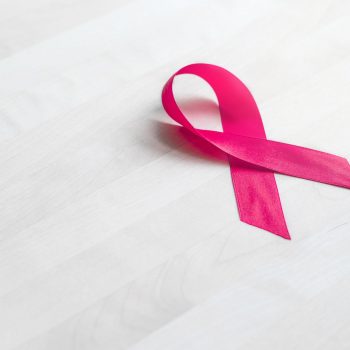The fight against breast cancer has one more weapon. In the United States, in fact, the first drug for the treatment of metastatic breast cancer caused by pathogenetic mutations in BRCA1 and 2 genes has been authorized. This new therapy is associated with increased progression-free survival. We talk about this topic with Dr. Monica Zuradelli, Assistant of Medical Oncology and Hematology and head of the genetic Counseling Service for Breast and Ovarian Cancer at Humanitas.
A defect in DNA repair
The new treatment was authorized by the Food and Drug Administration, the regulatory authority of the US pharmaceutical industry. The drug may be taken by women with metastatic breast cancer who are carriers of a pathogenetic mutation in the BRCA1 or BRCA2 genes.
The drug is called olaparib and has already been used for some years in the oncology field for the treatment of metastatic ovarian cancer in women carrying the same genetic mutations and responsive to chemotherapy treatments based on platinum salts. It is a drug that belongs to the family of PARP inhibitors. These molecules block the activity of an enzyme involved in the process of repairing damaged DNA in cancer cells. By inhibiting the action of the enzyme, the drug ensures that the genetic material of tumor cells cannot be repaired and that the cells therefore undergo death, i.e. a slowing down or interruption of tumor growth.
The US agency gave the go-ahead to use the drug for breast cancer with pathogenetic mutations in BRCA1 or BRCA2 genes in the light of the results of a randomized clinical trial. This trial involved more than three hundred patients with advanced stage neoplasia, randomized in two treatment paths: olaparib versus standard chemotherapy. Among the patients who took olaparib, progression-free survival was greater than those who underwent standard chemotherapy: seven months against just over four months. However, the new molecule has not improved overall survival rates.
The study also showed frequent side effects associated with new drug intake, such as anemia, nausea and vomiting, asthenia, headache and coughing.
The authorization of the drug – adds Dr. Zuradelli – is absolutely good news. It provides a new therapeutic alternative that significantly prolongs disease control in this particular group of patients. Parp-inhibitors are in fact an innovative class of drugs able to exploit the lack of some DNA repair mechanisms within cancer cells, to act on them directly and selectively towards cell death”.
Genes and cancer risk
Same as in the United States, the most diagnosed cancer in women in Italy is breast cancer. Its non-modifiable risk factors include family history. A percentage of between 5% and 7% – according to IAMO, the Italian Association of Medical Oncology – is associated with hereditary factors. Among these, in one out of four cases, the oncosuppressant BRCA1 and BRCA2 genes normally involved in the DNA repair process are responsible.
Pathogenetic mutations in these genes significantly increase the probability of developing breast and/or ovarian cancer over a lifetime. In particular, it is estimated that women with pathogenetic mutation in the BRCA1 gene have a risk of developing breast cancer up to 65% and ovarian cancer up to 40% over their lives, while women with pathogenetic mutation in the BRCA2 gene have a risk of developing breast cancer up to 50% and ovary up to 20% over their lifetime. Against these risks, it is therefore reasonable to discuss possible prophylactic surgery options for risk reduction, such as mastectomy and/or bilateral salpingo-oophorectomy.
But how can we detect the mutations of BRCA1 and 2 genes? Assessing the presence of pathogenetic mutations in the BRCA1 and 2 genes is a procedure that essentially requires collecting peripheral blood samples, which will then be analyzed by specific methods in the laboratory,” says the specialist.
However, in reality this procedure should always be carried out as part of a well-structured genetic counseling process. This path, managed by a multidisciplinary team, must in fact provide a pre-test genetic counseling, aimed at verifying the correct indication for the test and the explanation of possible results with consequent clinical-prognostic implications, and a post-test counseling, aimed at the revision of the results of the test, the explanation of the result and the discussion of the most appropriate diagnostic-therapeutic options”.
Which women should seek these tests?
These mutations are not very frequent in the general population, so not all patients diagnosed with breast cancer are candidates for genetic testing. In order to recognize women to be introduced to the genetic path, certain selection criteria recognized both nationally and internationally are helping us. They are fundamentally based on family history and/or some peculiar features of disease, such as an early age of onset (before age of 40), bilaterally (i.e. the presence of disease in both breasts, before the age of 50), particular histological types (e.g. negative triple breast cancer that occurs before the age of 60) or the presence of breast cancer in humans,” concludes Dr. Zuradelli.










